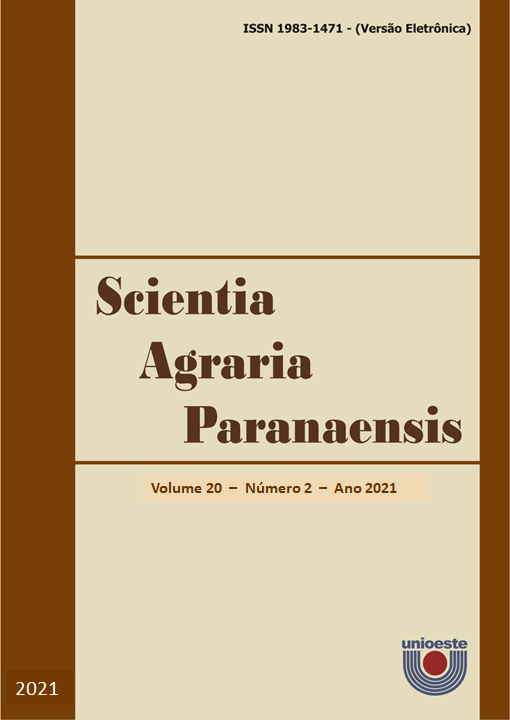Goats fed detoxified castor cake in different physiological stages: II. nutritional parameters, hepatic and renal
DOI:
https://doi.org/10.18188/sap.v20i2.26724Resumo
Evaluated the influence of the substitution of soybean meal (SM) by detoxified castor cake (DCC) on the intake and digestibility of dry matter and nutrients, nitrogen balance and function hepatic and renal of goats fed with diets containing DCC by alkaline solutions in confinement regime during different stages of biological development (growth, pregnancy and lactation). The treatments consisted of three diets, a formulated with corn and soybean meal (SM) and the others were formulated with detoxified castor cake by calcium hydroxide [Ca(OH)2 DCC] and another composed by detoxified castor by DCC of sodium hydroxide (NaOH). In relation to the biological stages, we observed higher intakes of DM and all the nutrients by goats during lactation, representing up to 4% of body weight. In relation to renal and hepatic parameters showed that there was interaction between the diets and biological stages on the levels of total proteins, direct bilirubin, albumin, alanine aminotransferase, aspartate aminotransferase, gamma glutamyl transferase. In a general way, the goats fed with both castor cake, regardless of the stage evaluated had higher levels. The detoxified castor cake by alkaline solutions in replacement of soybean meal proved to be a viable alternative in the feeding of goats in the three-stage biological, because it does not affect the functionality of the liver and kidney function and the nitrogen balance, in spite of the diets formulated with detoxified castor by sodium hydroxide decrease the intake of dry matter and nutrients.
Downloads
Publicado
Como Citar
Edição
Seção
Licença
Aviso de Direito Autoral Creative Commons
Política para Periódicos de Acesso Livre
Autores que publicam nesta revista concordam com os seguintes termos:
1. Autores mantém os direitos autorais e concedem à revista o direito de primeira publicação, com o trabalho simultaneamente licenciado sob a Licença Creative Commons Attribution que permite o compartilhamento do trabalho com reconhecimento da autoria e publicação inicial nesta revista.2. Autores têm autorização para assumir contratos adicionais separadamente, para distribuição não-exclusiva da versão do trabalho publicada nesta revista (ex.: publicar em repositório institucional ou como capítulo de livro), com reconhecimento de autoria e publicação inicial nesta revista.
3. Autores têm permissão e são estimulados a publicar e distribuir seu trabalho online (ex.: em repositórios institucionais ou na sua página pessoal) a qualquer ponto antes ou durante o processo editorial, já que isso pode gerar alterações produtivas, bem como aumentar o impacto e a citação do trabalho publicado (Veja O Efeito do Acesso Livre).
Licença Creative Commons
Esta obra está licenciada com uma Licença Creative Commons Atribuição-NãoComercial-CompartilhaIgual 4.0 Internacional, o que permite compartilhar, copiar, distribuir, exibir, reproduzir, a totalidade ou partes desde que não tenha objetivo comercial e sejam citados os autores e a fonte.


